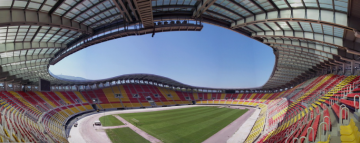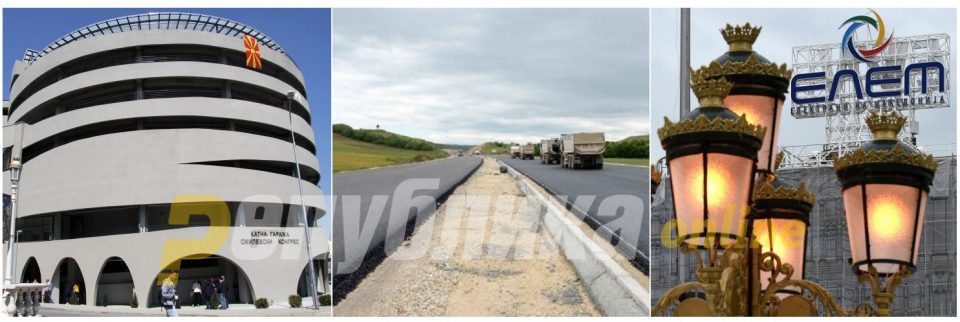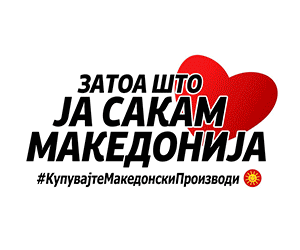Zoran Zaev took over the Government of Macedonia in the middle of a construction boom, in the capital Skopje and in criticial infrastructure across the country. His regime quickly put an end to the work needed to complete some of the most noticeable infrastructure projects, like the two Chinese supported highways linking Skopje to Stip and Kicevo to Ohrid, and the percentage of implementation of infrastructure funds provided in the Macedonian budget fell to single digits.
In some cases, such as the two highways, this move was driven by the desire to re-negotiate the deal and the VMRO-DPMNE party is now openly accusing Zaev of receiving bribes from the sub-contractors in exchange for agreeing to inflated addendums to the deal. In other cases, it was probably the desire to lash out against the major construction push in the capital, which included a number of landmark buildings meant to house public institutions.
Republika is presenting a list of 10 nearly finished projects which Zaev can’t or won’t complete.
1. Parking garage near the Holocaust Museum
The garage in a downtown area of the city which is badly starved for parking space has been finished since 2015, but SDSM appointed Mayors of the Centar municipality Andrej Zernovski and Sasa Bogdanovic have delayed its opening. A single guard can be seen in the building, which would be able to service visitors to the city center, theater goers and tourists, and in addition includes office space which all together comes to a four million EUR investment which is now left vacant.
2. The new ELEM office building
ELEM, the state owned energy company, built a new office building which was complete in September 2017. SDSM objected to the neo-classical style, which replaced much of the brutalist style favored by the left. During the construction, left wing activists camped in front of the site and protested the cutting of several trees in the area, giving SDSM a symbolic reason to leave it unused.
3. Skopje – Stip highway
Piece of badly needed infrastructure for the underdeveloped eastern part of Macedonia, the highway runs through flat terrain and was the easier of the two “Chinese highways”. Nearly 80 percent complete when Zaev took over in 2017 and is now considered finished but remains closed. The delays in its official opening are creating a significant traffic accident risk, as it is sometimes used by local citizens who can’t wait for Zaev to stage the ribbon cutting ceremony. It is widely assumed that the delays are driven by both corrupt reasons (asking for additional kick-backs from contractors) and PR reasons (put some daylight between the toppling of the Gruevski Government which drove the project and its opening).

4. Skopje – Sun City road
The Sun City planned community was meant to be a new standard in suburban living in Skopje, and the road that connects it with downtown Skopje through Mt. Vodno will be of service to many citizens of existing communities south-east of the capital. The road has been finished since April 2017. Remains unopened, and, like the Skopje – Stip highway, is sometimes used by commuters who choose to risk being fined or involed in an accident to getting stuck in traffic.
5. Transportation Ministry building
An existing building in the Pajko Maalo downtown area of Skopje, it underwent major reconstruction, both aesthetically and functionally. Nikola Gruevski and Vlado Misajlovski toured the complete work in May 2017. All that lacked were light bulbs and door knobs. The building remains unused to this day.
6. PUIK building
Ironically PUIK, the large public real-estate construction and management company, does not have proper offices of its own, despite managing thousands of state owned buildings and offices across the country. It finally got around to building an office building for itself under the Gruevski Government, between the Macedonian Opera and Ballet, and the Foreign Ministry. It was 80 percent complete in mid 2017, when Zaev took over, and that was the end of the work on the building.
7. Drama Faculty
In the same area which, houses some of the main cultural institutions in Macedonia, is the major new Drama Faculty building, projected to house a dozen smaller institutions as well. Last toured by the press in May 2017, when it was 80 percent complete. The Drama Faculty still operates out of a number of dilapidated wooden barracks.
8. City of Skopje building
Speaking of wooden barracks, the capital city is administered from a complex hastily put together after the 1963 earthquake. Construction permits for new high rise buildings are submitted to and approved from literal shacks. A large new complex for the city administration was built underneath the Kale fortress, close to the new Water utility building. Mayor Koce Trajanovski left office in 2017, when the building was nearly complete. His SDSM successor Petre Silegov still hasn’t been able to put it to any use.

9. Skopje stadium
Recently renamed to the Tose Proeski stadium to avoid offending the Greeks, the stadium was completely rebuilt starting in 2009 and named after Philip II of Macedon. Once a miserable football pitch with a single finished concrete stand, the Gruevski Government turned it into a venue worthy of hosting Real Madrid and Manchester United for the 2017 UEFA Super Cup. SDSM contribution to the work consisted in alarming the public that the newly built north stand will collapse if filled to capacity, a shocking case of black propaganda even by their standards. The coming UEFA Super Cup forced the Zaev regime to allow that the stadium is put to use, otherwise, it would likely have remained finished but unused.
10. Demir Kapija – Smokvica highway
One major infrastructure project which the Zaev Government couldn’t delay any longer was the stretch of highway which completes Macedonia’s only trans-country link – from Serbia to Greece. The highway by-passes the Demir Kapija gorge, which was long a dangerous choke point on the E-75 highway. Partially funded by the EU, the section was finished in 2017, when Zaev took over the Government, but he quickly pointed out a single electric pylon which needed removing. A full year later, once the SDSM PR machine could realistically claim that the highway is their doing, and not of the VMRO administration, the pylon was finally out of the picture, and the highway was opened with a much mocked brass band celebration. The outcry at the Zaev Government celebrating the work of the Gruevski Government which they attacked so long and mercilessly, was such that since then, no other similar celebration was held. Not that there was any reason to.




Comments are closed for this post.